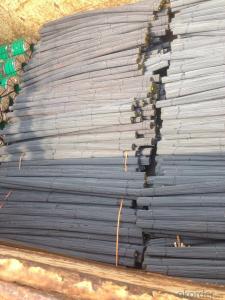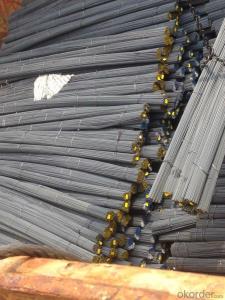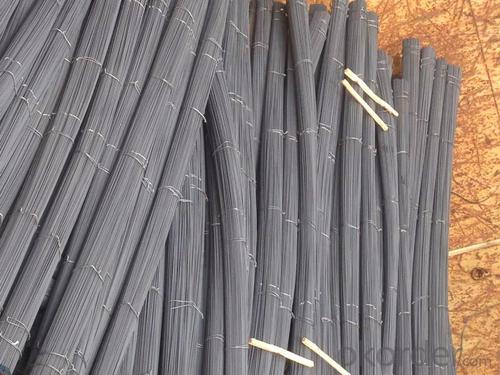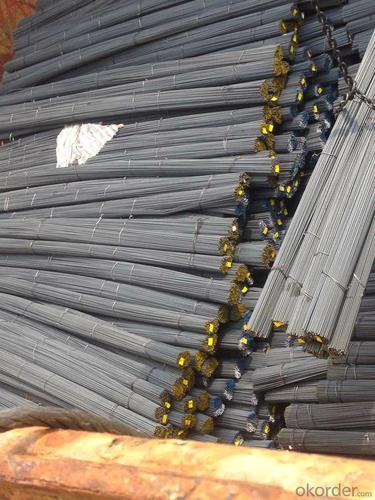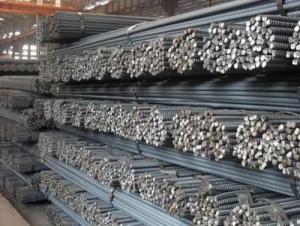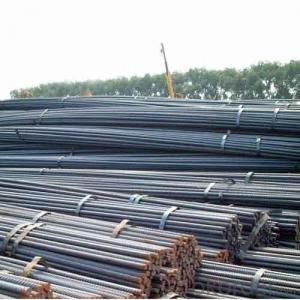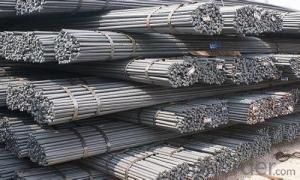Deformed Steel Bar with Reinforced Function for Construction
- Loading Port:
- Tianjin
- Payment Terms:
- TT OR LC
- Min Order Qty:
- 30 m.t.
- Supply Capability:
- 200000 m.t./month
OKorder Service Pledge
OKorder Financial Service
You Might Also Like
Specification
Product Description:
OKorder is offering Deformed Steel Bar with Reinforced Function for Constructionat great prices with worldwide shipping. Our supplier is a world-class manufacturer of steel, with our products utilized the world over. OKorder annually supplies products to European, North American and Asian markets. We provide quotations within 24 hours of receiving an inquiry and guarantee competitive prices.
Product Applications:
Deformed Steel Bar with Reinforced Function for Construction are ideal for structural applications and are widely used in the construction of buildings and bridges, and the manufacturing, petrochemical, and transportation industries.
Product Advantages:
OKorder's Deformed Steel Bar with Reinforced Function for Constructionare durable, strong, and resist corrosion.
Main Product Features:
· Premium quality
· Prompt delivery & seaworthy packing (30 days after receiving deposit)
· Corrosion resistance
· Can be recycled and reused
· Mill test certification
· Professional Service
· Competitive pricing
Product Specifications:
Standard | GB | HRB400 | |
Diameter | 6mm,8mm,10mm,12mm,14mm,16mm,18mm,20mm, 22mm,25mm,28mm,32mm,36mm,40mm,50mm | ||
Length | 6M, 9M,12M or as required | ||
Place of origin | Hebei, China mainland | ||
Advantages | exact size, regular package, chemical and mechanical properties are stable. | ||
Type | Hot rolled deformed steel bar | ||
Brand name | DRAGON | ||
Chemical Composition: (Please kindly find our chemistry of our material based on HRB500 as below for your information)
Grade | Technical data of the original chemical composition (%) | ||||||
C | Mn | Si | S | P | V | ||
HRB400 | ≤0.25 | ≤1.60 | ≤0.80 | ≤0.045 | ≤0.045 | 0.04-0.12 | |
Physical capability | |||||||
Yield Strength (N/cm²) | Tensile Strength (N/cm²) | Elongation (%) | |||||
≥400 | ≥570 | ≥14 | |||||
Theoretical weight and section area of each diameter as below for your information:
Diameter(mm) | Section area (mm²) | Mass(kg/m) | Weight of 12m bar(kg) |
6 | 28.27 | 0.222 | 2.664 |
8 | 50.27 | 0.395 | 4.74 |
10 | 78.54 | 0.617 | 7.404 |
12 | 113.1 | 0.888 | 10.656 |
14 | 153.9 | 1.21 | 14.52 |
16 | 201.1 | 1.58 | 18.96 |
18 | 254.5 | 2.00 | 24 |
20 | 314.2 | 2.47 | 29.64 |
22 | 380.1 | 2.98 | 35.76 |
25 | 490.9 | 3.85 | 46.2 |
28 | 615.8 | 4.83 | 57.96 |
32 | 804.2 | 6.31 | 75.72 |
36 | 1018 | 7.99 | 98.88 |
40 | 1257 | 9.87 | 118.44 |
50 | 1964 | 15.42 | 185.04 |
Usage and Applications of Deformed Steel Bar with Reinforced Function for Construction:
Deformed bar is widely used in buildings, bridges, roads and other engineering construction. Big to highways, railways, bridges, culverts, tunnels, public facilities such as flood control, dam, small to housing construction, beam, column, wall and the foundation of the plate, deformed bar is an integral structure material. With the development of world economy and the vigorous development of infrastructure construction, real estate, the demand for deformed bar will be larger and larger..
Packaging & Delivery ofDeformed Steel Bar with Reinforced Function for Construction:
Packaging Detail: products are packed in bundle and then shipped by container or bulk vessel, deformed bar is usually naked strapping delivery, when storing, please pay attention to moisture proof. The performance of rust will produce adverse effect.
Each bundle weight: 2-3MT, or as required
Payment term: TT or L/C
Delivery Detail: within 45 days after received advanced payment or LC.
Label: to be specified by customer, generally, each bundle has 1-2 labels
Trade terms: FOB, CFR, CIF
Images of Deformed Steel Bar with Reinforced Function for Construction
I
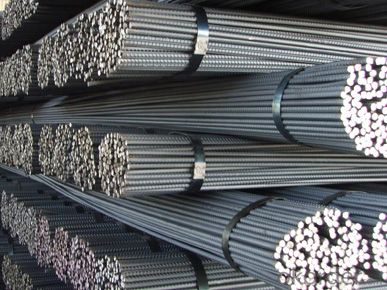
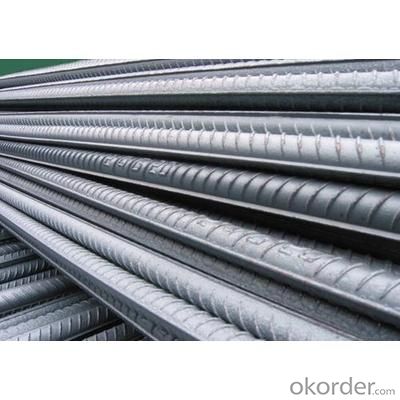
Note:
1. Our products are produced according to national standard (GB), if not, supply according to national standards (GB) or agreement as customer required.
2. Other Grade and Standard Deformed Steel Bar we can supply:
Grade: GR40/GR60, G460B/B500A/B500B/B500C,BST500S
Standard: ASTM, BS, DIN
The Minimum Order Quantity of these products is high, and need to be confirmed.
3. We can not only supply Deformed Steel Bar; if you need anything about building materials, please contact us for further information.
4. Please send us your detail specifications when inquire. We will reply to you as soon as possible. We sincerely hope we can establish a long stable business relationship.
FAQ:
Q1: How soon can we receive the product after purchase?
A1: Within three days of placing an order, we will begin production. The specific shipping date is dependent upon international and government factors, but is typically 7 to 10 workdays.
Q2: What makes stainless steel stainless?
A2: Stainless steel must contain at least 10.5 % chromium. It is this element that reacts with the oxygen in the air to form a complex chrome-oxide surface layer that is invisible but strong enough to prevent further oxygen from "staining" (rusting) the surface. Higher levels of chromium and the addition of other alloying elements such as nickel and molybdenum enhance this surface layer and improve the corrosion resistance of the stainless material.
- Q: Can steel rebars be used in reinforced masonry walls?
- Yes, steel rebars can be used in reinforced masonry walls. In fact, using steel rebars is a common practice in constructing reinforced masonry walls to enhance their strength and durability. The rebars are typically embedded within the mortar joints between the masonry units, such as bricks or concrete blocks. The steel rebars help to distribute the tensile forces that may occur in the masonry wall due to external loads or structural movements, as masonry materials are primarily strong in compression but weak in tension. By adding steel rebars, the reinforced masonry walls can better resist lateral forces, such as wind or seismic loads, and prevent cracking or structural failures. Additionally, the use of steel rebars can also increase the overall stability and load-bearing capacity of the masonry wall, making it suitable for a wide range of construction projects.
- Q: Can steel rebars be used in the construction of hospitals and healthcare facilities?
- Yes, steel rebars can be used in the construction of hospitals and healthcare facilities. Steel rebars provide structural strength and reinforcement to concrete, ensuring the stability and durability of the buildings. They are commonly used in foundations, beams, columns, and other critical structural elements of the construction.
- Q: How are steel rebars different from other types of reinforcement?
- Steel rebars are different from other types of reinforcement primarily because they are made of steel, which gives them high tensile strength and durability. Unlike other materials like wood or concrete, steel rebars can withstand heavy loads and provide structural integrity to reinforced concrete structures. Additionally, steel rebars can be easily molded and shaped into various designs, making them versatile and suitable for different construction applications.
- Q: Why is the threaded steel thread?
- Steel is commonly known as hot rolled ribbed bar, belonging to the small steel steel, mainly used for steel reinforced concrete structure frame. In use, some mechanical strength, bending deformation property and welding performance are required.
- Q: Can steel rebars be used in marine construction projects?
- Yes, steel rebars can be used in marine construction projects. However, it is essential to use corrosion-resistant steel rebars, such as stainless steel rebars or epoxy-coated rebars, to ensure durability and prevent corrosion caused by exposure to saltwater and other marine environments.
- Q: How do steel rebars contribute to the strength of concrete?
- The strength of concrete is enhanced in various ways by steel rebars. Firstly, they increase the tensile strength of concrete, which is otherwise relatively low. Although concrete is excellent at withstanding compression, it is weak when it comes to resisting tension. This is where steel rebars come into play. By embedding them within the concrete, they provide extra strength and help prevent cracks from forming and spreading. Secondly, the bond between concrete and the reinforcement material is improved by steel rebars. The ribbed surface of the rebars creates a better grip with the concrete, ensuring a stronger bond. This bond is crucial as it allows the concrete and steel to work together, distributing the loads and minimizing the risk of structural failure. Furthermore, the overall durability and longevity of concrete structures are increased by steel rebars. They are resistant to corrosion, which is a major concern in coastal or high humidity areas. The corrosion resistance of rebars ensures that the concrete remains structurally sound for a longer period, reducing maintenance costs and extending the lifespan of the structure. In addition to their strength-enhancing abilities, steel rebars also contribute to the structural stability of concrete elements. They help reinforce critical areas such as beams, columns, and foundations, where high loads and forces are present. By providing additional support and reinforcement, steel rebars help prevent excessive deflection, bending, or failure of these elements under heavy loads. To summarize, steel rebars are crucial in enhancing the strength of concrete structures by improving tensile strength, bond strength, durability, and overall structural stability. Incorporating them into concrete elements is essential to ensure the longevity and safety of various construction projects.
- Q: How do steel rebars contribute to the load-bearing capacity of structures?
- Steel rebars contribute to the load-bearing capacity of structures by providing reinforcement and strength to concrete. When embedded within the concrete, rebars increase its tensile strength, allowing it to withstand higher loads and prevent cracking or collapsing. This reinforcement enhances the overall structural integrity and durability of buildings, bridges, and other construction projects.
- Q: Can steel rebars be used in wastewater treatment plants?
- Yes, steel rebars can be used in wastewater treatment plants. Steel rebars are commonly used as reinforcement for concrete structures, including those found in wastewater treatment plants. The rebars provide strength and durability to the structures, ensuring they can withstand the harsh environments and corrosive nature of wastewater. However, it is important to select the appropriate grade of steel rebars that are resistant to corrosion caused by the chemicals present in wastewater.
- Q: Are there any codes or regulations for the use of steel rebars in construction?
- Steel rebars in construction are subject to codes and regulations to ensure their proper use. Guidelines and standards are provided by organizations like the American Concrete Institute (ACI) in the United States. The ACI 318 Building Code Requirements for Structural Concrete outlines specific requirements for the size, placement, and quality of rebars. Similar regulations can be found in the widely adopted International Building Code (IBC), which governs construction practices in different jurisdictions. It includes provisions and references to standards that dictate the use of rebars in reinforced concrete structures. Different countries also have their own standards organizations, such as the British Standards Institution (BSI) in the United Kingdom. These organizations have their own codes and regulations for the use of rebars in construction. These codes and regulations are crucial for ensuring the safety and longevity of structures. They establish requirements for rebars' size, grade, and placement, as well as provide guidelines for designing, detailing, and constructing reinforced concrete elements. Adhering to these codes and regulations guarantees that structures can withstand anticipated loads and perform as intended.
- Q: Are there any environmental concerns related to the production of steel rebars?
- Yes, there are several environmental concerns related to the production of steel rebars. One of the main concerns is the significant amount of energy required to produce steel. The production process involves the use of large amounts of fossil fuels, such as coal and natural gas, which contribute to greenhouse gas emissions and climate change. Another concern is the extraction and mining of iron ore, which is the primary raw material for steel production. This process can lead to deforestation, habitat destruction, and soil erosion. Additionally, the mining process can generate large amounts of waste material, which can contaminate nearby water sources. Furthermore, the steel production process also involves the emission of air pollutants, including particulate matter, sulfur dioxide, and nitrogen oxides. These pollutants can have detrimental effects on air quality and human health, causing respiratory problems and contributing to the formation of smog. It is important to note that efforts are being made by the steel industry to address these environmental concerns. For example, many steel producers are implementing more energy-efficient technologies and exploring alternative energy sources to reduce carbon emissions. Additionally, recycling steel is becoming more prevalent, which helps to conserve resources and decrease the environmental impact of steel production. Overall, while the production of steel rebars does pose environmental concerns, there are ongoing efforts to mitigate these impacts and make the process more sustainable.
Send your message to us
Deformed Steel Bar with Reinforced Function for Construction
- Loading Port:
- Tianjin
- Payment Terms:
- TT OR LC
- Min Order Qty:
- 30 m.t.
- Supply Capability:
- 200000 m.t./month
OKorder Service Pledge
OKorder Financial Service
Similar products
Hot products
Hot Searches
Related keywords

